|
Sunday:
November 23, 2003 | |
0001 GMT |
 |
O'Keefe: time is right for new space vision
Now is the best time in the last 30 years for the United States to craft a new vision for its space program, NASA Administrator Sean O'Keefe said at a Capitol Hill forum this week.
 FULL STORY FULL STORY
 |  |
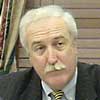
|
 |
Final death throes of nearby star witnessed
It takes only a few hundred to a thousand years for a dying Sun-like star, many billions of years old, to transform into a dazzling, glowing cloud called a planetary nebula. This relative blink in a long lifetime means that a Sun-like star's final moments - the crucial phase when its planetary nebula takes shape - have, until now, gone undetected.
 FULL STORY FULL STORY
 |  |

|
 |
|
Saturday:
November 22, 2003 | |
0215 GMT |
 |
Space science joins battle against cancer
Ground-breaking techniques which will be used to find tiny planets orbiting stars outside our Solar System are already being developed to help scientists detect cells in the early stages of cancer.
 FULL STORY FULL STORY
 |  |
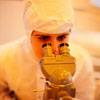
|
 |
SOHO tracks recent stormy regions on Sun's far side
Scientists using the Solar and Heliospheric Observatory (SOHO) spacecraft have been able to monitor the activity of the recent powerful solar magnetic active regions that were hidden on the far side of the Sun as they rotated with the Sun to face the Earth again.
 FULL STORY FULL STORY
 |  |

|
 |
|
Friday:
November 21, 2003 | |
0419 GMT |
 |
Shuttle Enterprise arrives at Smithsonian museum
The space shuttle Enterprise, NASA's prototype orbiter that performed landing tests in the 1970s, on Thursday was moved to the National Air and Space Museum's new Steven F. Udvar-Hazy Center where it joins other famous aircraft for the facility's opening next month.
 FULL STORY FULL STORY
 |  |

|
 |

Video coverage for subscribers only:
 VIDEO: WATCH ENTERPRISE ARRIVE AT THE MUSEUM QT VIDEO: WATCH ENTERPRISE ARRIVE AT THE MUSEUM QT
 SUBSCRIBE NOW SUBSCRIBE NOW

|
International Space Station marks five years in orbit
Five years ago Thursday the first piece of the International Space Station was launched into orbit. The Russian Zarya control module was carried aloft by a Proton rocket, beginning the complex sequence of space missions to assemble the orbiting laboratory.
 FULL STORY FULL STORY
 |  |

|
 |

Video coverage for subscribers only:
 VIDEO: MUSIC VIDEO LOOKING BACK AT FIRST 5 YEARS OF ISS QT VIDEO: MUSIC VIDEO LOOKING BACK AT FIRST 5 YEARS OF ISS QT
 SUBSCRIBE NOW SUBSCRIBE NOW

|
Military weather satellite ready for service
Having completed a month-long checkout sequence in orbit, the Air Force's newly-launched Defense Meteorological Satellite Program F16 weather spacecraft has been declared operational.
 FULL STORY FULL STORY
 LAUNCH COVERAGE LAUNCH COVERAGE
 |  |

|
 |
IN OTHER NEWS Additional stories making news today
|
 |
Sun revs up again -- The solar regions that produced dramatic space weather activity in late October and early November returned to the visible side of the sun, according to the NOAA Space Environment Center. The area known as NOAA Region 501 already produced a moderate radio blackout, R2 on the NOAA space weather scales, and spawned a severe, or G4, geomagnetic storm, which began Thursday.
|
 |
|
Thursday:
November 20, 2003 | |
2141 GMT |
 |
Heavy-lifting version of Delta 4 to take test flight
In a Cape Canaveral hangar, a rocket of monstrous proportions and power is taking shape. It will be unveiled next month, rolling to the launch pad to prepare for a demonstration flight that will test its knack for lofting hefty cargos into orbit and potentially one day ferrying humans to the space station.
 FULL STORY FULL STORY
 |  |

|
 |
One year ago: Maiden flight of Delta 4 rocket
The era of Boeing's next-generation rocket family was launched with success November 20, 2002 as the maiden Delta 4 powered its way into Earth orbit to deploy a European-made communications satellite.
 FULL COVERAGE FULL COVERAGE
 |  |

|
 |
Station progress report
The Expedition 8 crew is one-month into its half-year mission aboard the International Space Station. On Wednesday, NASA officials provided a space station status briefing, including details about an upcoming spacewalk, delays in launching the next resupply ship and scientific research aboard the outpost. Spaceflight Now Plus users can watch the entire 60-minute briefing.
 |  |

|
 |

Video coverage for subscribers only:
 VIDEO: SPACE STATION STATUS BRIEFING QT VIDEO: SPACE STATION STATUS BRIEFING QT
 SUBSCRIBE NOW SUBSCRIBE NOW

|
Sun does magnetic flip
Research with the Solar and Heliospheric Observatory spacecraft has revealed the process that may implement the reversal in the direction of the Sun's magnetic field that is known to occur every 11 years. This newly recognized factor in the Sun's magnetic flipping is the cumulative effect of more than a thousand huge eruptions called Coronal Mass Ejections.
 FULL STORY FULL STORY
 |  |

|
 |
Lockheed opens Orbital Space Plane demo center
Lockheed Martin will unveil a new Orbital Space Plane Demonstration Center this week in the Washington, D.C. area. Dedicated to the accomplishments of human spaceflight, the Center will showcase the concepts and operational qualities of NASA's next space transportation system through simulators and interactive graphics.
 FULL STORY FULL STORY
 |  |

|
 |
|
Wednesday:
November 19, 2003 | |
0041 GMT |
 |
NASA provides update on shuttle return-to-flight
Space shuttle program officials Tuesday gave a progress report on NASA's return-to-flight efforts, speaking on tile and RCC repair issues, orbiter inspections in space and training simulations for the Mission Management Team. Spaceflight Now Plus users can watch the entire 45-minute briefing.
 |  |

|
 |

Video coverage for subscribers only:
 VIDEO: RETURN-TO-FLIGHT PROGRESS BRIEFING QT VIDEO: RETURN-TO-FLIGHT PROGRESS BRIEFING QT
 SUBSCRIBE NOW SUBSCRIBE NOW

|
NASA names new safety advisory panel
The new NASA Aerospace Safety Advisory Panel, which includes nine distinguished members and a new charter, was announced Tuesday. The initial meeting of the new panel is expected soon. The ASAP was originally chartered by Congress in 1967 after the tragic Apollo 1 fire, to act as an independent body to advise the NASA Administrator on safety issues.
 FULL STORY FULL STORY
 |  |
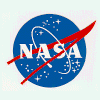
|
 |
Navy spacecraft being prepped for Dec. 15 liftoff
A U.S. Navy communications satellite is undergoing final pre-launch activities at Cape Canaveral for launch next month aboard a Lockheed Martin Atlas 3B rocket.
 FULL STORY FULL STORY
 |  |

|
 |
|
Tuesday:
November 18, 2003 | |
0008 GMT |
 |
Launch of Einstein's space experiment postponed
An exotic satellite mission to test Albert Einstein's theories of space and time, scheduled for blastoff in early December, is being bumped into 2004 by a technical bug.
 FULL STORY FULL STORY
 |  |
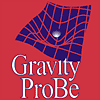
|
 |
Most distant X-ray jet found provides clues to big bang
The most distant jet ever observed was discovered in an image of a quasar made by NASA's Chandra X-ray Observatory. Extending more than 100,000 light-years from the supermassive black hole powering the quasar, the jet of high-energy particles provides astronomers with information about the intensity of the cosmic microwave background radiation 12 billion years ago.
 FULL STORY FULL STORY
 |  |
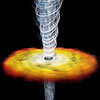
|
 |
|
Monday:
November 17, 2003 | |
0010 GMT |
 |
Ulysses gives first 3-D observations of sun storms
The sun's surface is a violent and turbulent place, where a fiery tempest always blows. Scientists are reporting in the journal Science that they have finally succeeded in getting a good three-dimensional view of it using the Ulysses spacecraft.
 FULL STORY FULL STORY
 |  |

|
 |
NASA orders Boeing Delta 2 rocket for STEREO launch
NASA is exercising a contract option for a Delta 2 vehicle to launch STEREO for the Office of Space Science Solar Terrestrial Probes Program. The spacecraft is planned for launch November 15, 2005, from Cape Canaveral Air Force Station.
 FULL STORY FULL STORY
 |  |

|
 |

